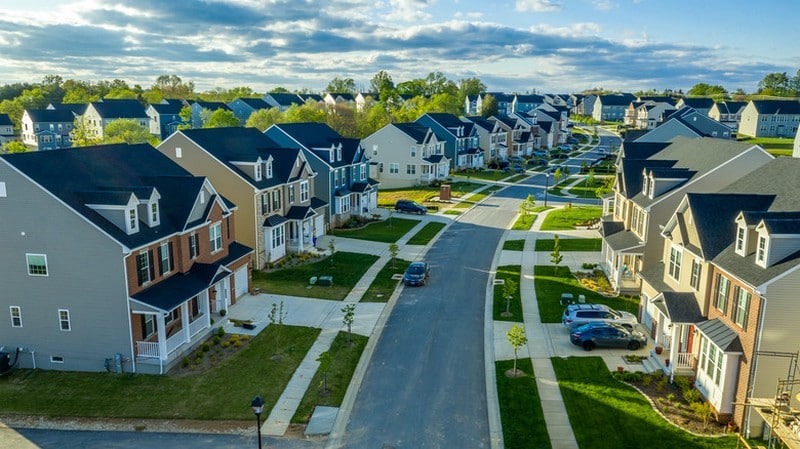
Modern homes are bold. They use sharp lines, glass walls, and clean edges. But if you live in a neighborhood with an HOA, bold may clash with the rulebook. Some HOAs want a uniform look—think shutters, brick, and beige paint. The challenge? Mixing fresh design with old-school rules.
If you’re building or remodeling in the Charlotte area, you’ll want to check in early. A smart first step is working with a team that knows the local ropes. Teams that specialize in HOA Management in Charlotte, NC can help you find common ground between your vision and the HOA’s handbook. That early step can save you from design do-overs, delays, or fines. Planning early is often the key to keeping your dream alive while staying within the boundaries of community guidelines.
Know Your HOA Guidelines Before You Draw
Before you hire an architect or sketch out your dream porch, read the HOA rules. Most HOAs have detailed architectural standards. These spell out what colors, shapes, and materials you can use. Some even list banned roof pitches or say “no” to metal siding.
If you’re not sure what counts as modern and what’s off-limits, ask. It’s better to get answers now than to rip out a sleek window wall later. Don’t guess. Confirm. Knowing the rules helps you design with purpose and can save you a lot of heartache down the road.
Talk to the Architectural Review Board Early
Most HOAs have a group that reviews building plans—called the Architectural Review Board (ARB). They look at your design and make sure it fits the HOA vibe. This board is key in deciding whether your ideas get the green light.
Get on their radar early. Share sketches or ideas before your final plans. If you’re open to feedback, the board may be more likely to say yes. And you’ll avoid the back-and-forth that stalls projects. Early discussions can also uncover hidden rules you didn’t spot in the documents.
Use Design That Blends, Not Battles
Modern doesn’t mean flashy. Clean lines and simple shapes can still match a community’s feel. Use neutral tones, natural stone, or wood accents to keep things warm. A metal roof might work if it’s in a soft matte shade, not a bright silver glare.
Glass walls can look striking—but maybe use them in backyards, not front facades. You want your design to look like it belongs, even if it stands out. Small design choices—like matching rooflines or complementary color palettes—can create harmony without watering down your vision.
Think Green: HOAs Love Smart Choices
Want a win-win? Use energy-smart upgrades. Solar panels, low-flow water systems, and green roofs can help your modern home shine. Green features are not only better for the environment but can also save you money long-term.
HOAs are more open to modern designs when they come with eco benefits. Pitch your design as part of a green effort. Use words like “sustainable,” “efficient,” and “low impact.” It shifts the focus from style to value. You’re not just building a home—you’re making a smarter community choice.
Be Flexible and Offer Alternatives
If your first plan gets pushback, don’t panic. Ask what parts are the issue. Maybe it’s the window size, not the overall shape. Or the trim color, not the whole palette.
Come with options. Show that you care about the community’s look. That small gesture can go a long way in getting approval. Being flexible shows respect for the process and opens doors for compromise.
Know When to Push—and When to Pivot
Sometimes your design is worth the fight. If your home is on a corner or at the edge of the community, you may have more wiggle room. But know your limits.
Long fights with the HOA cost time and money. It may be smarter to make a few small changes than to lose months to meetings. Know what matters most and where you can bend. Prioritize the features that truly define your vision and be ready to give ground on less critical points.
Team Up with Experts
An architect who knows HOAs can be gold. Same with builders who’ve worked under HOA rules before. They’ll help you steer clear of no-go features and suggest smart tweaks that pass muster.
You’re not just building a house—you’re navigating a system. The right pros make that road smoother. Their experience can help you avoid costly mistakes and unnecessary delays.
Use Tech to Visualize and Sell Your Plan
Today’s design tools are powerful. You can show 3D models, photo overlays, even video walk-throughs. Bring those to the ARB meeting.
When board members can see how your house fits the block, they may ease up. A clean visual is better than a hard-to-read blueprint. Visuals help create confidence and excitement about your project.
Keep Records and Stay Respectful
Save emails, approvals, and notes. If things go south, that paper trail helps. And always stay calm. HOA boards are made of neighbors. Be the kind of neighbor they want to work with.
Respect goes a long way. Being polite and patient—even when frustrated—can make the process less stressful for everyone. Keeping clear records also protects you in case there are any misunderstandings later.
Plan for the Long Term
Modern design isn’t just about looks. It’s about how your home functions for years to come. Think about maintenance, materials, and how your choices will age. Choosing timeless materials and efficient layouts can make your home a joy to live in for decades.
HOAs often worry about how homes will look five or ten years down the road. Show that your design is built to last, not just to follow the latest trend. This long-term thinking can win you extra support.
Final Thought
Modern design and HOA rules don’t have to clash. With a bit of prep, smart design, and clear talk, you can build the home you want—and keep the peace.
Follow the rules where it matters, and bring bold ideas where you can. It’s all about balance. That’s how great design grows—one thoughtful step at a time.
Remember: the goal is to create a home that reflects your style while respecting the community you’re part of. With the right approach, you can do both—and love the result.








